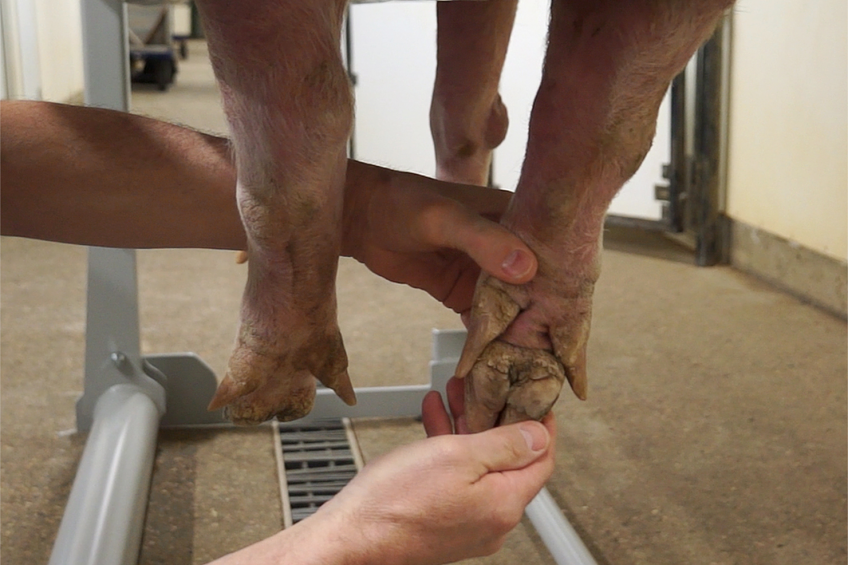How to optimise sow retention and longevity

Sow longevity is a complex phenomenon, influenced by many factors. Finding the right balance between keeping the herd young enough, while still maintaining a significant number of sows between parities 3 to 5 in the system is an ongoing challenge.
By Dr Mark Wilson, swine reproductive physiologist, Zinpro Corporation, USA
A recent analysis of herd records including more than 700,000 sows from 355 US swine farms, performed by PigChamp*, revealed an average replacement rate of 53.55%. In many herds, the largest percentage of breeding female losses are found in gilts and young (first parity) sows. Results from a review of US swine industry data from 2005 to 2010 found that culling rate significantly increased during this time frame.
Management efforts to improve sow retention and longevity have typically focused on using overall herd culling rates as the primary metric. However, research from Dr John Deen in 2003 suggested that parity of sow at culling was not the best way to measure sow retention and removal rates may not be the best measure for characterising sow retention problems. Instead, he recommended utilising the proportion of animals in the herd that make it through the early parities as a more appropriate management metric. By focusing management efforts on setting targets that will increase the retention rate of gilts and young sows in the herd, producers may have a greater opportunity for improvement.
A high price to pay
The direct effects of sow turnover on profitability are associated with feed consumption and, therefore, feed costs. The sow herd accounts for approximately 20% of feed costs in a commercial farrow-to-finish system. A high sow turnover due to reproductive failures or lameness increases the number of non-productive days that the sow consumes feed and also enlarges the size of the gilt pool consuming feed.
Assuming an average replacement rate in the US of approximately 53%, moving this target to a range between 42-45% will only have a small impact on sow herd efficiency. However, the improved performance in growing and finishing will have a major impact on herd feed conversion (HFC).
Replacement rates below 40% lead to excessive aging of sows in the herd. Eventually, this drives a higher influx of gilts into the herd, resulting in a parity profile with too many old and young sows and not enough ‘prime’ parity sows.
Setting a goal that more than 70% of gilts entering the reproductive pool remain to at least their fourth parity will help optimise retention and profitability of the sow herd.
When more gilts enter the herd due to high sow turnover rates, this also increases the number of progeny born to first parity sows and several consequences then impact the performance of the breeding and growing herds. Gilts typically have a lower litter size compared to multiparous sows and their piglets are lighter at birth and weaning compared to those from older parity sows. In addition to being lighter, research has also demonstrated that pre-weaning growth rates for gilt progeny are 12% to 17% less than sow progeny. This means gilt progeny are on average 1 kg lighter at weaning and 6 kg lighter at sale (24 weeks of age).
Studies evaluating the value of fostering gilt progeny onto multiparous sows to improve pre-weaning growth have demonstrated that these pigs continue to lag behind when compared to sow progeny, see Figure 1. Piglets born weighing less than 1.2 kg account for 40% of pre-weaning mortality. In addition, gilt-litter progeny have a higher mortality and increased disease susceptibility, see Figure 2. Studies show that while gilts produce adequate amounts of colostrum, the transfer of antibodies to their piglets may be compromised in comparison to multiparous sows.
Collectively, all of these seemingly small factors linked to gilt progeny have a significant effect on HFC due to their effects on mortality and sale weight. In fact, the effects are much greater than the direct impact of sow feed usage on HFC.
Investing for future herd performance
The importance of gilt development in the sow’s lifetime contribution to the herd is often underestimated. Research has shown that pig producers need to start developing their replacement gilts as early as 18 kg in order to maximise their lifetime potential and longevity within the herd. Addressing the gilt’s nutritional needs helps decrease feed costs – which account for 70% of a replacement gilt’s expense – while also contributing to her longevity within the herd. By slightly slowing a gilt’s growth rate and feeding correct levels of essential trace minerals including zinc, copper and manganese amino acid complexes (Availa Sow), she is able to reach physiological maturity at 230 days and 135 kg of bodyweight with an improved skeletal structure-to-weight balance.
Young sows are often culled due to feet and leg problems, which decrease reproductive performance and profitability. Herd records show lameness accounts for up to 15% of total culls through the first parity. Lameness and its stress on the sow also influence reproduction through longer wean-to-oestrus intervals, more non-productive sow days, smaller litter size and fewer pigs weaned.
While poor fertility often causes sows to exit the herd early, lameness also contributes to several factors that cause poor fertility. Foot lesions are commonly found on 15% to 40% of developing gilts. Inflammatory lesions cause pain and stress, directly impacting reproductive performance.
Growth and reproduction are physiological processes that are innately intertwined with the immune system. Inflammation affects the partitioning of nutrients toward the immune system and away from production. Thus, it is better to prevent inflammatory conditions such as lameness and disease because they impact nutrient utilisation and decrease reproductive efficiency.
Recent records from five farms in Spain show that adding zinc, manganese and copper amino acid complexes (Availa Sow) to sow diets dramatically reduced the cull rate of gilts and young sows due to lameness and reproductive failure. At the outset, 42% of bred gilts were not reaching third parity. Within two years, that number had dropped to 23% – a nearly 20% improvement in young-sow retention.
Another key to improving a gilts retention within the herd involves maintaining bodyweight during first lactation. By breeding gilts at 135 to 150 kg bodyweight on their second or third estrus, the gilt has the weight and maturity to gestate, lactate a litter of pigs and then re-breed. Gilts bred at less than 135 kg had fewer total pigs over three parities than their heavier, more mature counterparts.
Bringing mature, structurally sound gilts into the herd improves their chances of reaching fourth parity, the point at which these animals begin making money for the operation. In fact data has shown that increasing the number of sows from parity 3 to 6 has a significant impact on the overall productivity of the herd.
We know a sow must reach her fourth parity to realise her economic potential. By working to decrease lameness in the sow herd, we are able to increase the longevity of sows and, in turn, are able to reduce the number of gilts entering the sow herd in each breeding group. When sow lameness is decreased and turnover reduced, swine producers are able to improve reproductive parameters including feed intake during lactation, weaning weights, number of pigs weaned and farrowing rates. However, the greatest performance enhancement results from decreasing the number of gilt litters with progeny that exhibit decreased grow-finish performance. Since gilt litters also have a higher risk of disease, morbidity and mortality, these cumulative effects have a tremendous impact on HFC and the subsequent profitability of the herd.
* Average replacement rate calculated as number of animals culled plus number of sows that died.
References available on request











